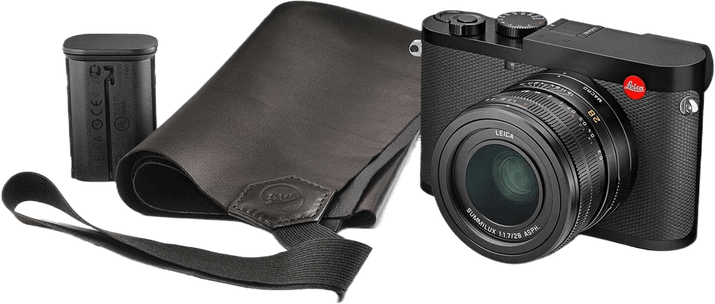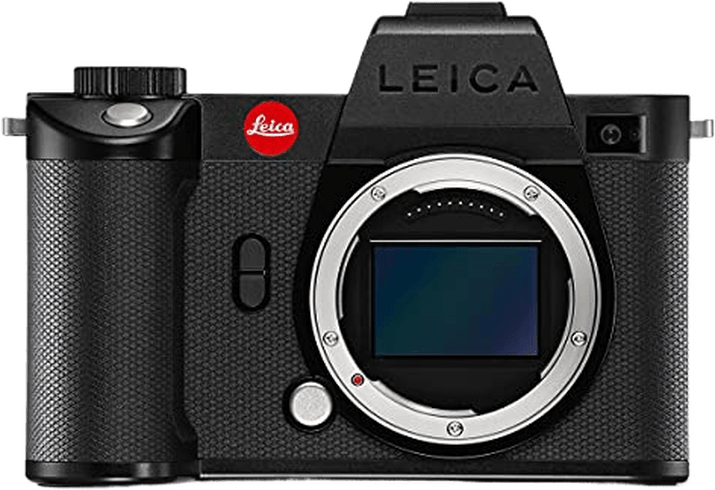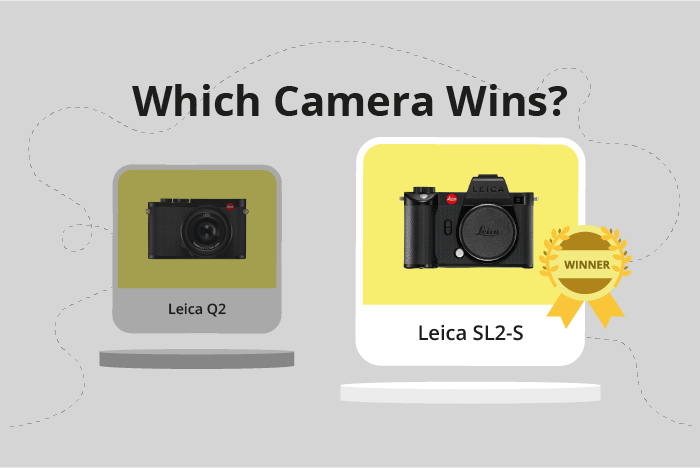Leica Q2 vs SL2-S Comparison
Leica Q2

Leica SL2-S

The Leica SL2-S takes the lead with a score of 81/100, while the Leica Q2 trails with 76/100. Both cameras, introduced in 2019 and 2020, are priced around $5,000. They share similarities in their launch prices and release years.
The Leica SL2-S, a mirrorless camera, stands out with its larger size (146 x 107 x 83mm) and heavier weight (931g). This camera’s superior score reflects its better performance and features.
On the other hand, the Leica Q2, a compact camera, has a smaller size (130 x 80 x 92mm) and lighter weight (734g), making it a more portable option. Despite its lower score, it still offers excellent quality for those prioritizing portability.
Considering these points, the Leica SL2-S is the better camera overall, but the Leica Q2 remains a strong contender for those seeking a more compact option.
Leica Q2 vs SL2-S Overview and Optics
The Leica SL2-S emerges as the winner in the optics comparison, scoring 85/100, while the Leica Q2 scores 79/100. Both cameras share several common specifications, including full-frame CMOS sensors, Leica processors (Maestro II for Q2 and Maestro III for SL2-S), and similar DXOMARK scores (96 for Q2 and 95 for SL2-S).
The Leica SL2-S outperforms the Q2 in various aspects. Firstly, it has a faster shooting speed of 20, doubling the Q2’s 10. Secondly, the SL2-S has a lens mount (Leica L), allowing users to change lenses, while the Q2 has a fixed lens mount. Lastly, the SL2-S includes image stabilization, a feature absent in the Q2, which enhances image quality by reducing camera shake effects.
In contrast, the Leica Q2 boasts a higher megapixel count of 47.3, compared to the SL2-S’s 24.6. This advantage enables the Q2 to capture more detailed images, particularly beneficial for large prints or cropping. However, this is the only area in which the Q2 surpasses the SL2-S.
Weighing the advantages of each camera, the Leica SL2-S’s faster shooting speed, interchangeable lens mount, and image stabilization make it a superior choice in terms of optics. The Leica Q2’s higher megapixel count is noteworthy, but it does not compensate for the SL2-S’s overall stronger performance. Thus, for users prioritizing optics, the Leica SL2-S is the recommended option.
Leica Q2 vs SL2-S Video Performance
The Leica Q2 emerges as the winner in video capabilities, scoring 91 out of 100, while the Leica SL2-S scores 83. Both cameras share some common specifications in this regard. They offer a maximum video resolution of 4K and dimensions of 4096 x 2160. Additionally, both cameras have built-in time-lapse functionality.
The Leica Q2 outperforms the SL2-S with its higher maximum video frame rate of 120fps, compared to the SL2-S’s 60fps. This difference allows the Q2 to capture smoother and more detailed slow-motion footage, providing an advantage for videographers who require high-quality slow-motion capabilities.
However, the Leica SL2-S has its own strengths, despite its lower score. While it may not surpass the Q2 in terms of video frame rate, it matches the Q2 in other important aspects, such as video resolution, dimensions, and time-lapse functionality. This means that the SL2-S still delivers impressive video quality and features, even if it does not outshine the Q2.
Taking these factors into consideration, the Leica Q2 proves to be the superior camera for video capabilities due to its higher frame rate, which allows for smoother slow-motion footage. On the other hand, the Leica SL2-S remains a strong contender, offering comparable video quality and features. Ultimately, the choice between these two cameras will depend on the specific needs of the videographer, with the Q2 being more suitable for those prioritizing slow-motion capabilities and the SL2-S catering to those who are satisfied with its solid video performance.
Leica Q2 vs SL2-S Features and Benefits
The Leica Q2 takes the lead in features with a score of 83/100, while the Leica SL2-S follows with a score of 74/100. Both cameras share common specifications, including a touchscreen, WiFi, and Bluetooth connectivity. Neither camera has a flip screen or GPS functionality.
The Leica Q2’s advantage lies in its higher feature score. Its 3-inch screen size is slightly smaller than the SL2-S’s 3.2-inch screen but has a lower screen resolution of 1,040,000 dots compared to the SL2-S’s 2,100,000 dots. Despite this difference, the Q2 still manages to outperform the SL2-S in terms of features.
On the other hand, the Leica SL2-S does possess some advantages over the Q2. Its larger 3.2-inch screen size offers a more comfortable and immersive viewing experience. Additionally, the SL2-S boasts a higher screen resolution of 2,100,000 dots, providing a clearer and sharper display than the Q2’s 1,040,000 dots.
Considering the features of both cameras, the Leica Q2 emerges as the better option due to its higher score. This indicates that the Q2 offers more advanced and useful features compared to the SL2-S. However, the SL2-S should not be overlooked, as its larger screen size and higher resolution display are noteworthy advantages.
Ultimately, the choice between the Leica Q2 and the SL2-S depends on the user’s preferences and priorities. If a higher feature score is of utmost importance, the Q2 is the clear winner. However, if screen size and resolution are more crucial, the SL2-S may be the better choice.
Leica Q2 vs SL2-S Storage and Battery
The Leica SL2-S triumphs over the Leica Q2 in storage and battery performance, scoring 73/100 compared to the Q2’s 21/100. Both cameras share compatibility with SD, SDHC, and SDXC memory cards and use the BP-SCL4 battery type. However, the SL2-S outshines the Q2 with its two memory card slots, longer battery life, and USB charging capability.
The SL2-S’s dual memory card slots provide users with more storage options and flexibility, while its 510-shot battery life ensures extended shooting sessions. Additionally, the convenience of USB charging makes the SL2-S more versatile and user-friendly.
Although the Q2 lags behind the SL2-S in this comparison, it still offers decent storage and battery performance with its single memory card slot and 350-shot battery life. However, the lack of USB charging may be a drawback for some users.
Ultimately, the Leica SL2-S emerges as the superior choice in terms of storage and battery capabilities, while the Leica Q2 remains a satisfactory option for those who can overlook its limitations.
Leica Q2 vs SL2-S – Our Verdict
Are you still undecided about which camera is right for you? Have a look at these popular comparisons that feature the Leica Q2 or the Leica SL2-S:

